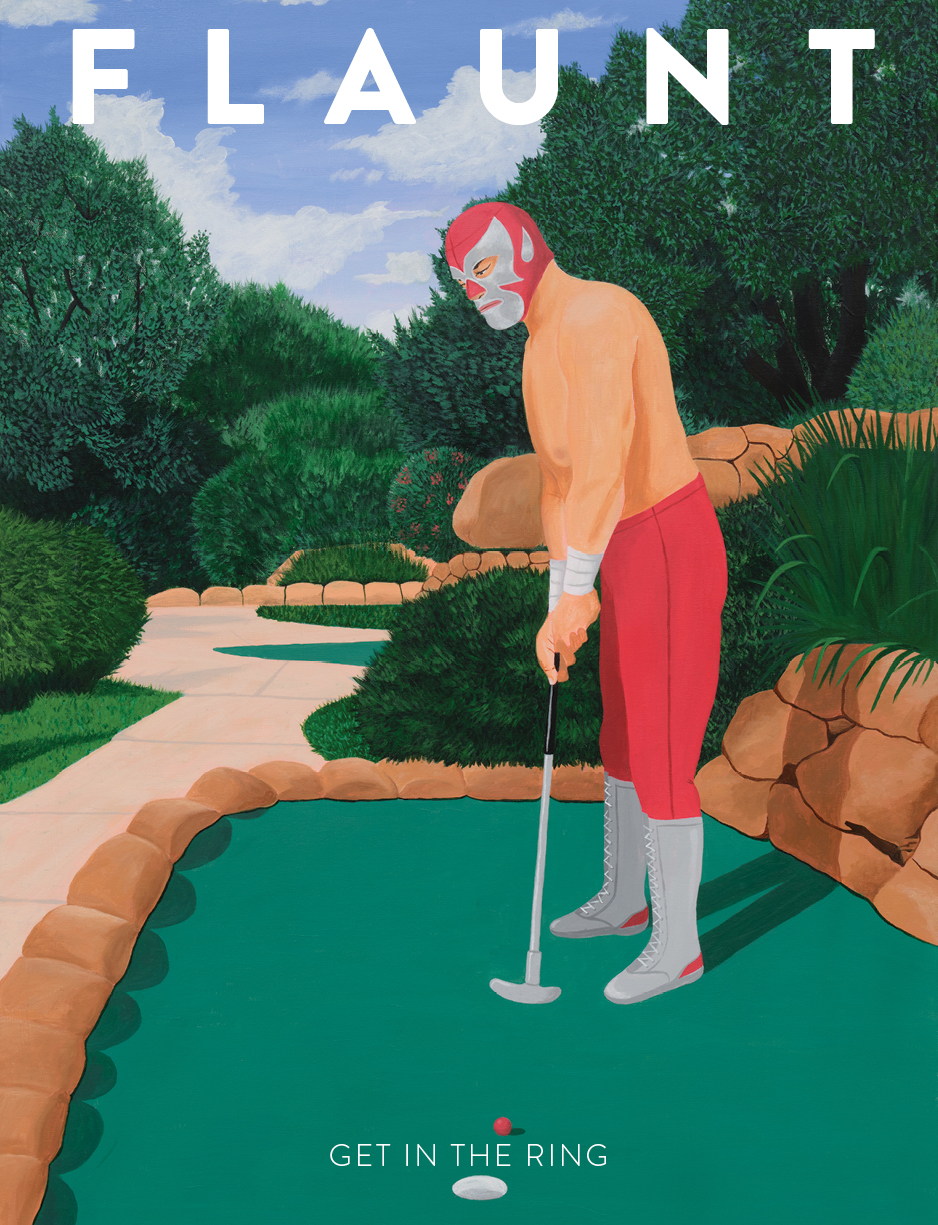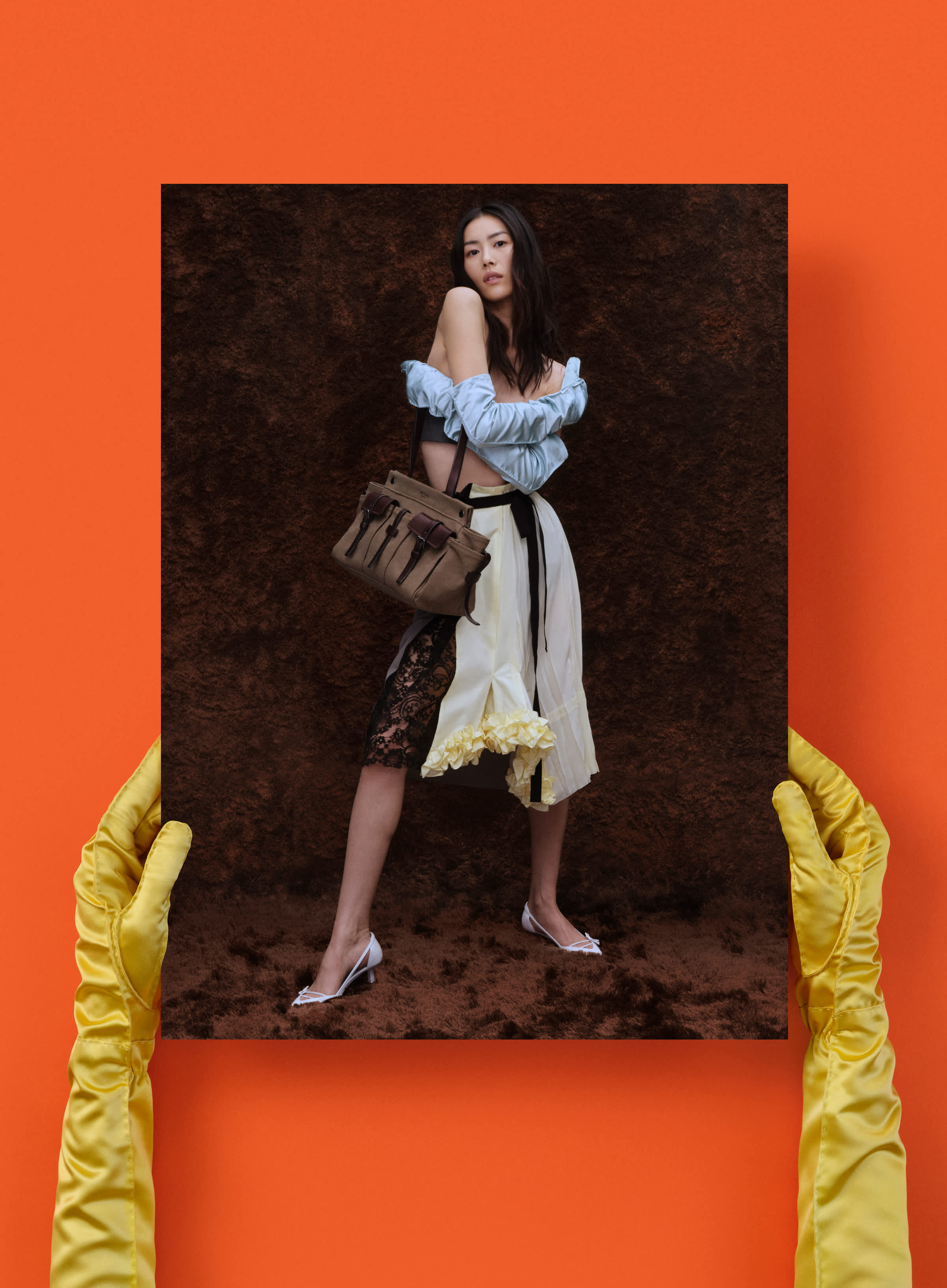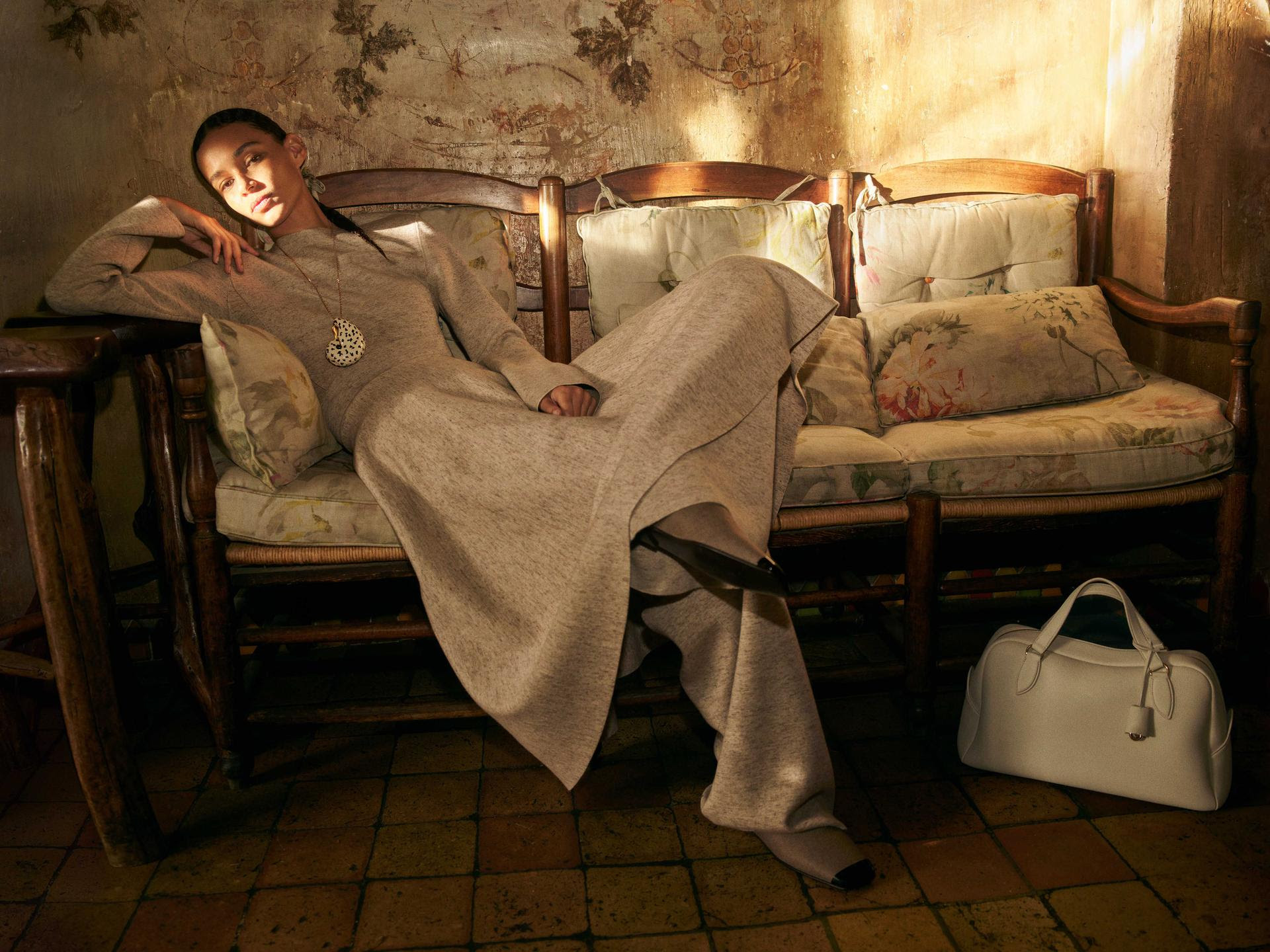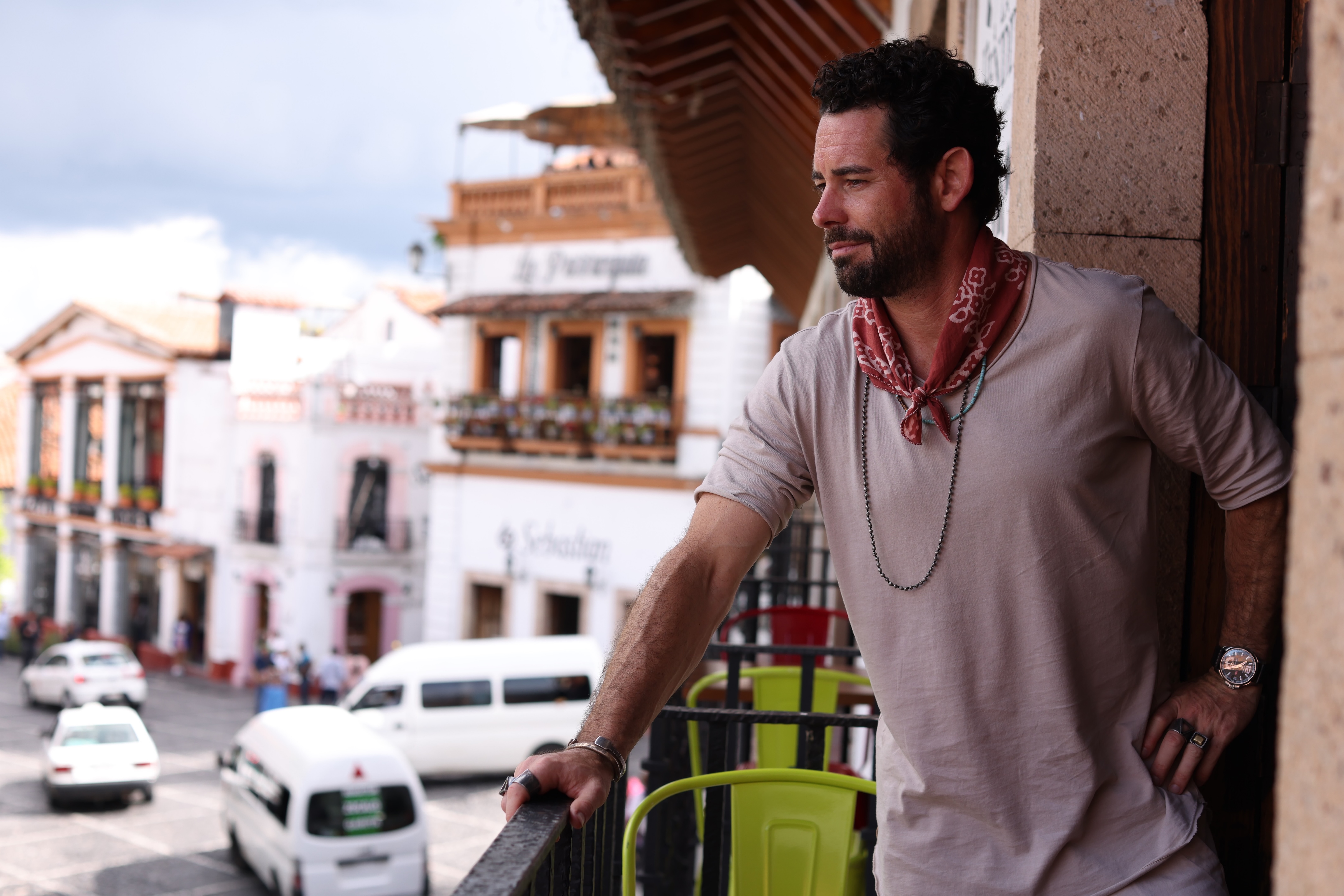

He's built replica atomic bombs, recreated Fermi's nuclear experiments, developed ciphers yet to be cracked by the NSA and CIA, and he lives on an island, and that's only the beginning...
Uranium. It’s a name that rolls off the tongue—almost as dense with vowels as it is with neutrons and protons. It’s a name that envelops existential uncertainty—nuclear fallout, nuclear war, and mushroom clouds bigger than mountains. To the scientist, perhaps, it speaks of supercritical chain reactions—of uncontrollable cascades of neutrons, of atomic nuclei torn apart in an exponentially exploding disassembly of matter.
To the artist—to Jim Sanborn—uranium speaks of a decision: “Pure science is really in some ways virginal, and is developed as an open-source, beautiful, delicate process. Then at some point in time someone discovers that there might be value in it and the pure science turns into a technology, and things can then go either way—you can cure cancer, or you can make an atomic bomb. It’s that point in time that I find to be the most stimulating, because it is a decision.”
Sanborn explored that decision by single-handedly splitting the atom. To pull off this feat he labored in secret for five years, building the highly technical apparatus. Sanborn recreated—in excruciatingly accurate detail—the experiment that Enrico Fermi and others used to fission uranium in 1939—proof positive that the nuclear age would change everything.
[


](http://images.squarespace-cdn.com/content/v1/56c346b607eaa09d9189a870/1487292956754-XD9FHRHVZ34GDIKWHNZQ/Penetrating-radiation-1-sans-dropshadow.jpg)
Penetrating-radiation-1-sans-dropshadow
_“Penetration Radiation” (2002). Depleted uranium projectile with its autoradiograph, digital print. 40 x 36 inches. Courtesy the artist._
In 1858 the English scientist Michael Faraday wrote: “The beauty of electricity or of any other force is not that the power is mysterious \[...\] but that it is under law, and that the taught intellect can \[...\] govern it \[...\] The human mind is placed above, and not beneath \[...\] for \[...\] it conveys the gifts of God to man.”
Too often the exploration of secret worlds that science epitomizes are misunderstood by the arts\* and scientific results are either deferred to as something mystical, used as a shield to protect shaky conclusions, or partronized as something inhuman. Sanborn on the other hand extracts his art from the cunning intelligence of the idea itself, exposing the hidden worlds at the exact points where they touch humanity. The success of his approach is dramatic, particularly given his lack of formal training in engineering or the “hard” sciences. Sanborn—described by the Washington Post as “six-foot-eight with a sea captain’s beard”—studied sculpture and archaeology, yet the clock-like minds at the CIA perceived rare intellectual dexterity in his work.
[


](http://images.squarespace-cdn.com/content/v1/56c346b607eaa09d9189a870/1487292924134-7077P6LWVJYJ0OGPAH7E/15.-Lux-.jpg)
15.-Lux-
_“Lux, Fort Myers Florida,” 2001. Bronze, light, text, cylinders. 8 x 5 feet. Courtesy the artist._
In 1988, they commissioned “Kryptos”—a sculpture of four different ciphers engraved on copper plates and erected at their headquarters. “I was doing ‘Invisible Forces of the Earth’ at the time,” says Sanborn, “they made some sort of quantum leap and decided that I could do invisible forces of mankind as well as nature.” “Kryptos”—the most Googled object on the planet for two days after its use on the cover of _The Da Vinci Code_—contains encrypted messages which are known to have been pursued by entire teams of both the NSA and CIA, yet only three of its panels have thus far surrendered their hidden secrets. Following “Kryptos,” Sanborn began projecting text and hidden messages over public spaces using brilliant light, he then took to the wilderness: “I went out West and started projecting on to the landscape in the middle of the night. I projected Euclidean geometric forms on landmasses that were originally crystalline structures that had been softened by weather. If I saw a triangular mountain, I envisioned the original pure triangle and would project that on to it. It ties back to that whole Platonic ideal.”
[


](http://images.squarespace-cdn.com/content/v1/56c346b607eaa09d9189a870/1487293019721-NUJUTCI3X39RCDUQEIWR/Rough-Rock-Arizona-Projected-Light.jpg)
Rough-Rock,-Arizona,-Projected-Light
_“Rough Rock Arizona” (1995). Large format projection, digital print. 30 x 36 inches. Courtesy the artist._
The vast glowing projections led excited locals to report that UFOs had landed. Ironically, this work took him to the UFO “hotspot” of White Sands, New Mexico—the home of the Manhattan Project. Here Sanborn became fascinated with the development of the atomic bomb, and was inspired to spend the next six years building “Critical Assembly”—a highly accurate replica of the first atomic bomb. To build it, Sanborn acquired original parts from the Manhattan Project, and harvested information from sources as diverse as Soviet atomic documents stolen by a spy during the Cold War, and the combined intelligence of an anti-nuclear campaigner, and “a disparate source from the military side.”
“I had to do it all in secret.” Sanborn admits, “None of us were sure that we wouldn’t get thrown in jail once the exhibition opened.” Sanborn’s next project was to split the atom: “One of the reasons I live on an island \[at the mouth of the Potomac River\] is that I am very isolated and so nobody’s going to come to my gate à la Frankenstein with pitchforks.” There’s a tangible fearlessness in Sanborn’s work—copying the bomb, splitting the atom—yet perhaps his most deadly work has been infiltrating the Cambodian black market for his series Without Provenance.
“The particle accelerator was dangerous, and I was at risk when I was doing the Manhattan Project installation,” Sanborn admits, “and so I assumed risk once again and decided to infiltrate the forgery trade in Cambodia, which goes hand in hand with the looting trade. Over a six year period I was able to infiltrate the forgery business and learn the methods that they use to make objects which are completely indistinguishable by science from real pieces.”
Sanborn’s motives were varied—as the son of the Director of Exhibitions for the Library of Congress, he was disgusted by the role of the art world in looting antiquities, and was intrigued by the prevalence of forgeries. Beset by perils, he snuck into locations where the forgeries were being made: “I got in there at a time when the forgers weren’t there, and I uncovered all of these things and photographed them so that I could understand the processes. My translator passed out from the fumes because the wind was blowing in his direction. It’s extremely toxic stuff.”
Sanborn’s next escapade was ever more daring: “I worked with this archaeologist, and we dressed him up in some bling, put him in a fancy car, and told the forgers that he was a buyer from England. I was able to videotape the whole thing—in the forger’s lair so to speak. Forgery in Cambodia is basically handled by about five families, much like the mafia, and so if a forgery family cannot sell something, they send it to the Governor’s compound on a military truck, and if the Governor can’t sell it, he sends it in a military vehicle to the Thai border where their military picks it up and takes it to a Bangkok gallery. And each step along the way somebody’s getting paid. As far as I’m concerned, and as far as the archaeologists are concerned, they would much prefer to have forgery thrive in Cambodia and sell collectors forged objects, rather than looted ones.”
[


](http://images.squarespace-cdn.com/content/v1/56c346b607eaa09d9189a870/1487292933893-Z7EVPIEXQ9NIVB18P96C/8x11-bold-Looting-92-Vishnu-in-Acid-8x11-Bold-PRESS.jpg)
8x11-bold-Looting-92-Vishnu-in-Acid-8x11-Bold-PRESS
_“A Pair of Sandstone Figures Of Vishnu In Nitric Acid,” (2015). A Cambodian forgery site. Digital print. 36" x 40” inches. Courtesy the artist._
This is consistent with Sanborn’s artistic approach to exploiting hidden worlds—of using intelligence and technology to explore and protect secrets, be they in a brilliantly lit art gallery, a homemade nuclear laboratory, or buried in the darkest jungle—and irrespective of whether the mystery can, will, or should be solved. As Sanborn himself encrypted in the first panel of “Kryptos:” BETWEEN SUBTLE SHADING AND THE ABSENCE OF LIGHT LIES THE _NUANCE OF IQLUSION._
_\* Not that What the Bleep Do We Know? should be considered art... Certainly there are triumphs, such as when Picasso was inspired by Poincaré’s thoughts on depicting extra dimensions, yet for the most part contemporary or modern efforts were well described by noted art critic T.J. Clark, who wrote that: “Art usually dines very poorly on the leavings of science.”_
_Follow Gus Donohoo on Instagram ([@](https://twitter.com/a_m_d_)[gusdonohoo](https://www.instagram.com/gusdonohoo/)). He's known for being the brightest guy at the cocktail party._
 
He's built replica atomic bombs, recreated Fermi's nuclear experiments, developed ciphers yet to be cracked by the NSA and CIA, and he lives on an island, and that's only the beginning...
Uranium. It’s a name that rolls off the tongue—almost as dense with vowels as it is with neutrons and protons. It’s a name that envelops existential uncertainty—nuclear fallout, nuclear war, and mushroom clouds bigger than mountains. To the scientist, perhaps, it speaks of supercritical chain reactions—of uncontrollable cascades of neutrons, of atomic nuclei torn apart in an exponentially exploding disassembly of matter.
To the artist—to Jim Sanborn—uranium speaks of a decision: “Pure science is really in some ways virginal, and is developed as an open-source, beautiful, delicate process. Then at some point in time someone discovers that there might be value in it and the pure science turns into a technology, and things can then go either way—you can cure cancer, or you can make an atomic bomb. It’s that point in time that I find to be the most stimulating, because it is a decision.”
Sanborn explored that decision by single-handedly splitting the atom. To pull off this feat he labored in secret for five years, building the highly technical apparatus. Sanborn recreated—in excruciatingly accurate detail—the experiment that Enrico Fermi and others used to fission uranium in 1939—proof positive that the nuclear age would change everything.
[

He's built replica atomic bombs, recreated Fermi's nuclear experiments, developed ciphers yet to be cracked by the NSA and CIA, and he lives on an island, and that's only the beginning...
Uranium. It’s a name that rolls off the tongue—almost as dense with vowels as it is with neutrons and protons. It’s a name that envelops existential uncertainty—nuclear fallout, nuclear war, and mushroom clouds bigger than mountains. To the scientist, perhaps, it speaks of supercritical chain reactions—of uncontrollable cascades of neutrons, of atomic nuclei torn apart in an exponentially exploding disassembly of matter.
To the artist—to Jim Sanborn—uranium speaks of a decision: “Pure science is really in some ways virginal, and is developed as an open-source, beautiful, delicate process. Then at some point in time someone discovers that there might be value in it and the pure science turns into a technology, and things can then go either way—you can cure cancer, or you can make an atomic bomb. It’s that point in time that I find to be the most stimulating, because it is a decision.”
Sanborn explored that decision by single-handedly splitting the atom. To pull off this feat he labored in secret for five years, building the highly technical apparatus. Sanborn recreated—in excruciatingly accurate detail—the experiment that Enrico Fermi and others used to fission uranium in 1939—proof positive that the nuclear age would change everything.
[
 
](http://images.squarespace-cdn.com/content/v1/56c346b607eaa09d9189a870/1487292956754-XD9FHRHVZ34GDIKWHNZQ/Penetrating-radiation-1-sans-dropshadow.jpg)
Penetrating-radiation-1-sans-dropshadow
_“Penetration Radiation” (2002). Depleted uranium projectile with its autoradiograph, digital print. 40 x 36 inches. Courtesy the artist._
In 1858 the English scientist Michael Faraday wrote: “The beauty of electricity or of any other force is not that the power is mysterious \[...\] but that it is under law, and that the taught intellect can \[...\] govern it \[...\] The human mind is placed above, and not beneath \[...\] for \[...\] it conveys the gifts of God to man.”
Too often the exploration of secret worlds that science epitomizes are misunderstood by the arts\* and scientific results are either deferred to as something mystical, used as a shield to protect shaky conclusions, or partronized as something inhuman. Sanborn on the other hand extracts his art from the cunning intelligence of the idea itself, exposing the hidden worlds at the exact points where they touch humanity. The success of his approach is dramatic, particularly given his lack of formal training in engineering or the “hard” sciences. Sanborn—described by the Washington Post as “six-foot-eight with a sea captain’s beard”—studied sculpture and archaeology, yet the clock-like minds at the CIA perceived rare intellectual dexterity in his work.
[

](http://images.squarespace-cdn.com/content/v1/56c346b607eaa09d9189a870/1487292956754-XD9FHRHVZ34GDIKWHNZQ/Penetrating-radiation-1-sans-dropshadow.jpg)
Penetrating-radiation-1-sans-dropshadow
_“Penetration Radiation” (2002). Depleted uranium projectile with its autoradiograph, digital print. 40 x 36 inches. Courtesy the artist._
In 1858 the English scientist Michael Faraday wrote: “The beauty of electricity or of any other force is not that the power is mysterious \[...\] but that it is under law, and that the taught intellect can \[...\] govern it \[...\] The human mind is placed above, and not beneath \[...\] for \[...\] it conveys the gifts of God to man.”
Too often the exploration of secret worlds that science epitomizes are misunderstood by the arts\* and scientific results are either deferred to as something mystical, used as a shield to protect shaky conclusions, or partronized as something inhuman. Sanborn on the other hand extracts his art from the cunning intelligence of the idea itself, exposing the hidden worlds at the exact points where they touch humanity. The success of his approach is dramatic, particularly given his lack of formal training in engineering or the “hard” sciences. Sanborn—described by the Washington Post as “six-foot-eight with a sea captain’s beard”—studied sculpture and archaeology, yet the clock-like minds at the CIA perceived rare intellectual dexterity in his work.
[
 
](http://images.squarespace-cdn.com/content/v1/56c346b607eaa09d9189a870/1487292924134-7077P6LWVJYJ0OGPAH7E/15.-Lux-.jpg)
15.-Lux-
_“Lux, Fort Myers Florida,” 2001. Bronze, light, text, cylinders. 8 x 5 feet. Courtesy the artist._
In 1988, they commissioned “Kryptos”—a sculpture of four different ciphers engraved on copper plates and erected at their headquarters. “I was doing ‘Invisible Forces of the Earth’ at the time,” says Sanborn, “they made some sort of quantum leap and decided that I could do invisible forces of mankind as well as nature.” “Kryptos”—the most Googled object on the planet for two days after its use on the cover of _The Da Vinci Code_—contains encrypted messages which are known to have been pursued by entire teams of both the NSA and CIA, yet only three of its panels have thus far surrendered their hidden secrets. Following “Kryptos,” Sanborn began projecting text and hidden messages over public spaces using brilliant light, he then took to the wilderness: “I went out West and started projecting on to the landscape in the middle of the night. I projected Euclidean geometric forms on landmasses that were originally crystalline structures that had been softened by weather. If I saw a triangular mountain, I envisioned the original pure triangle and would project that on to it. It ties back to that whole Platonic ideal.”
[

](http://images.squarespace-cdn.com/content/v1/56c346b607eaa09d9189a870/1487292924134-7077P6LWVJYJ0OGPAH7E/15.-Lux-.jpg)
15.-Lux-
_“Lux, Fort Myers Florida,” 2001. Bronze, light, text, cylinders. 8 x 5 feet. Courtesy the artist._
In 1988, they commissioned “Kryptos”—a sculpture of four different ciphers engraved on copper plates and erected at their headquarters. “I was doing ‘Invisible Forces of the Earth’ at the time,” says Sanborn, “they made some sort of quantum leap and decided that I could do invisible forces of mankind as well as nature.” “Kryptos”—the most Googled object on the planet for two days after its use on the cover of _The Da Vinci Code_—contains encrypted messages which are known to have been pursued by entire teams of both the NSA and CIA, yet only three of its panels have thus far surrendered their hidden secrets. Following “Kryptos,” Sanborn began projecting text and hidden messages over public spaces using brilliant light, he then took to the wilderness: “I went out West and started projecting on to the landscape in the middle of the night. I projected Euclidean geometric forms on landmasses that were originally crystalline structures that had been softened by weather. If I saw a triangular mountain, I envisioned the original pure triangle and would project that on to it. It ties back to that whole Platonic ideal.”
[
 
](http://images.squarespace-cdn.com/content/v1/56c346b607eaa09d9189a870/1487293019721-NUJUTCI3X39RCDUQEIWR/Rough-Rock-Arizona-Projected-Light.jpg)
Rough-Rock,-Arizona,-Projected-Light
_“Rough Rock Arizona” (1995). Large format projection, digital print. 30 x 36 inches. Courtesy the artist._
The vast glowing projections led excited locals to report that UFOs had landed. Ironically, this work took him to the UFO “hotspot” of White Sands, New Mexico—the home of the Manhattan Project. Here Sanborn became fascinated with the development of the atomic bomb, and was inspired to spend the next six years building “Critical Assembly”—a highly accurate replica of the first atomic bomb. To build it, Sanborn acquired original parts from the Manhattan Project, and harvested information from sources as diverse as Soviet atomic documents stolen by a spy during the Cold War, and the combined intelligence of an anti-nuclear campaigner, and “a disparate source from the military side.”
“I had to do it all in secret.” Sanborn admits, “None of us were sure that we wouldn’t get thrown in jail once the exhibition opened.” Sanborn’s next project was to split the atom: “One of the reasons I live on an island \[at the mouth of the Potomac River\] is that I am very isolated and so nobody’s going to come to my gate à la Frankenstein with pitchforks.” There’s a tangible fearlessness in Sanborn’s work—copying the bomb, splitting the atom—yet perhaps his most deadly work has been infiltrating the Cambodian black market for his series Without Provenance.
“The particle accelerator was dangerous, and I was at risk when I was doing the Manhattan Project installation,” Sanborn admits, “and so I assumed risk once again and decided to infiltrate the forgery trade in Cambodia, which goes hand in hand with the looting trade. Over a six year period I was able to infiltrate the forgery business and learn the methods that they use to make objects which are completely indistinguishable by science from real pieces.”
Sanborn’s motives were varied—as the son of the Director of Exhibitions for the Library of Congress, he was disgusted by the role of the art world in looting antiquities, and was intrigued by the prevalence of forgeries. Beset by perils, he snuck into locations where the forgeries were being made: “I got in there at a time when the forgers weren’t there, and I uncovered all of these things and photographed them so that I could understand the processes. My translator passed out from the fumes because the wind was blowing in his direction. It’s extremely toxic stuff.”
Sanborn’s next escapade was ever more daring: “I worked with this archaeologist, and we dressed him up in some bling, put him in a fancy car, and told the forgers that he was a buyer from England. I was able to videotape the whole thing—in the forger’s lair so to speak. Forgery in Cambodia is basically handled by about five families, much like the mafia, and so if a forgery family cannot sell something, they send it to the Governor’s compound on a military truck, and if the Governor can’t sell it, he sends it in a military vehicle to the Thai border where their military picks it up and takes it to a Bangkok gallery. And each step along the way somebody’s getting paid. As far as I’m concerned, and as far as the archaeologists are concerned, they would much prefer to have forgery thrive in Cambodia and sell collectors forged objects, rather than looted ones.”
[

](http://images.squarespace-cdn.com/content/v1/56c346b607eaa09d9189a870/1487293019721-NUJUTCI3X39RCDUQEIWR/Rough-Rock-Arizona-Projected-Light.jpg)
Rough-Rock,-Arizona,-Projected-Light
_“Rough Rock Arizona” (1995). Large format projection, digital print. 30 x 36 inches. Courtesy the artist._
The vast glowing projections led excited locals to report that UFOs had landed. Ironically, this work took him to the UFO “hotspot” of White Sands, New Mexico—the home of the Manhattan Project. Here Sanborn became fascinated with the development of the atomic bomb, and was inspired to spend the next six years building “Critical Assembly”—a highly accurate replica of the first atomic bomb. To build it, Sanborn acquired original parts from the Manhattan Project, and harvested information from sources as diverse as Soviet atomic documents stolen by a spy during the Cold War, and the combined intelligence of an anti-nuclear campaigner, and “a disparate source from the military side.”
“I had to do it all in secret.” Sanborn admits, “None of us were sure that we wouldn’t get thrown in jail once the exhibition opened.” Sanborn’s next project was to split the atom: “One of the reasons I live on an island \[at the mouth of the Potomac River\] is that I am very isolated and so nobody’s going to come to my gate à la Frankenstein with pitchforks.” There’s a tangible fearlessness in Sanborn’s work—copying the bomb, splitting the atom—yet perhaps his most deadly work has been infiltrating the Cambodian black market for his series Without Provenance.
“The particle accelerator was dangerous, and I was at risk when I was doing the Manhattan Project installation,” Sanborn admits, “and so I assumed risk once again and decided to infiltrate the forgery trade in Cambodia, which goes hand in hand with the looting trade. Over a six year period I was able to infiltrate the forgery business and learn the methods that they use to make objects which are completely indistinguishable by science from real pieces.”
Sanborn’s motives were varied—as the son of the Director of Exhibitions for the Library of Congress, he was disgusted by the role of the art world in looting antiquities, and was intrigued by the prevalence of forgeries. Beset by perils, he snuck into locations where the forgeries were being made: “I got in there at a time when the forgers weren’t there, and I uncovered all of these things and photographed them so that I could understand the processes. My translator passed out from the fumes because the wind was blowing in his direction. It’s extremely toxic stuff.”
Sanborn’s next escapade was ever more daring: “I worked with this archaeologist, and we dressed him up in some bling, put him in a fancy car, and told the forgers that he was a buyer from England. I was able to videotape the whole thing—in the forger’s lair so to speak. Forgery in Cambodia is basically handled by about five families, much like the mafia, and so if a forgery family cannot sell something, they send it to the Governor’s compound on a military truck, and if the Governor can’t sell it, he sends it in a military vehicle to the Thai border where their military picks it up and takes it to a Bangkok gallery. And each step along the way somebody’s getting paid. As far as I’m concerned, and as far as the archaeologists are concerned, they would much prefer to have forgery thrive in Cambodia and sell collectors forged objects, rather than looted ones.”
[
 
](http://images.squarespace-cdn.com/content/v1/56c346b607eaa09d9189a870/1487292933893-Z7EVPIEXQ9NIVB18P96C/8x11-bold-Looting-92-Vishnu-in-Acid-8x11-Bold-PRESS.jpg)
8x11-bold-Looting-92-Vishnu-in-Acid-8x11-Bold-PRESS
_“A Pair of Sandstone Figures Of Vishnu In Nitric Acid,” (2015). A Cambodian forgery site. Digital print. 36" x 40” inches. Courtesy the artist._
This is consistent with Sanborn’s artistic approach to exploiting hidden worlds—of using intelligence and technology to explore and protect secrets, be they in a brilliantly lit art gallery, a homemade nuclear laboratory, or buried in the darkest jungle—and irrespective of whether the mystery can, will, or should be solved. As Sanborn himself encrypted in the first panel of “Kryptos:” BETWEEN SUBTLE SHADING AND THE ABSENCE OF LIGHT LIES THE _NUANCE OF IQLUSION._
_\* Not that What the Bleep Do We Know? should be considered art... Certainly there are triumphs, such as when Picasso was inspired by Poincaré’s thoughts on depicting extra dimensions, yet for the most part contemporary or modern efforts were well described by noted art critic T.J. Clark, who wrote that: “Art usually dines very poorly on the leavings of science.”_
_Follow Gus Donohoo on Instagram ([@](https://twitter.com/a_m_d_)[gusdonohoo](https://www.instagram.com/gusdonohoo/)). He's known for being the brightest guy at the cocktail party._

](http://images.squarespace-cdn.com/content/v1/56c346b607eaa09d9189a870/1487292933893-Z7EVPIEXQ9NIVB18P96C/8x11-bold-Looting-92-Vishnu-in-Acid-8x11-Bold-PRESS.jpg)
8x11-bold-Looting-92-Vishnu-in-Acid-8x11-Bold-PRESS
_“A Pair of Sandstone Figures Of Vishnu In Nitric Acid,” (2015). A Cambodian forgery site. Digital print. 36" x 40” inches. Courtesy the artist._
This is consistent with Sanborn’s artistic approach to exploiting hidden worlds—of using intelligence and technology to explore and protect secrets, be they in a brilliantly lit art gallery, a homemade nuclear laboratory, or buried in the darkest jungle—and irrespective of whether the mystery can, will, or should be solved. As Sanborn himself encrypted in the first panel of “Kryptos:” BETWEEN SUBTLE SHADING AND THE ABSENCE OF LIGHT LIES THE _NUANCE OF IQLUSION._
_\* Not that What the Bleep Do We Know? should be considered art... Certainly there are triumphs, such as when Picasso was inspired by Poincaré’s thoughts on depicting extra dimensions, yet for the most part contemporary or modern efforts were well described by noted art critic T.J. Clark, who wrote that: “Art usually dines very poorly on the leavings of science.”_
_Follow Gus Donohoo on Instagram ([@](https://twitter.com/a_m_d_)[gusdonohoo](https://www.instagram.com/gusdonohoo/)). He's known for being the brightest guy at the cocktail party._



.jpeg)














